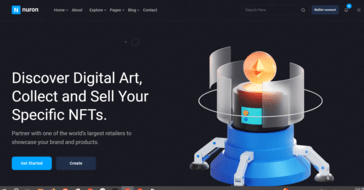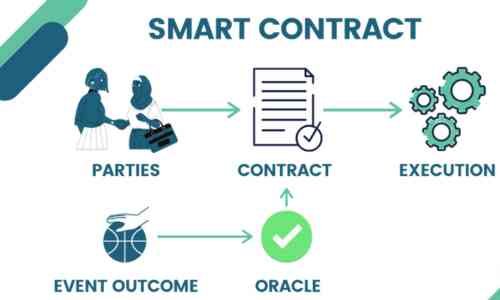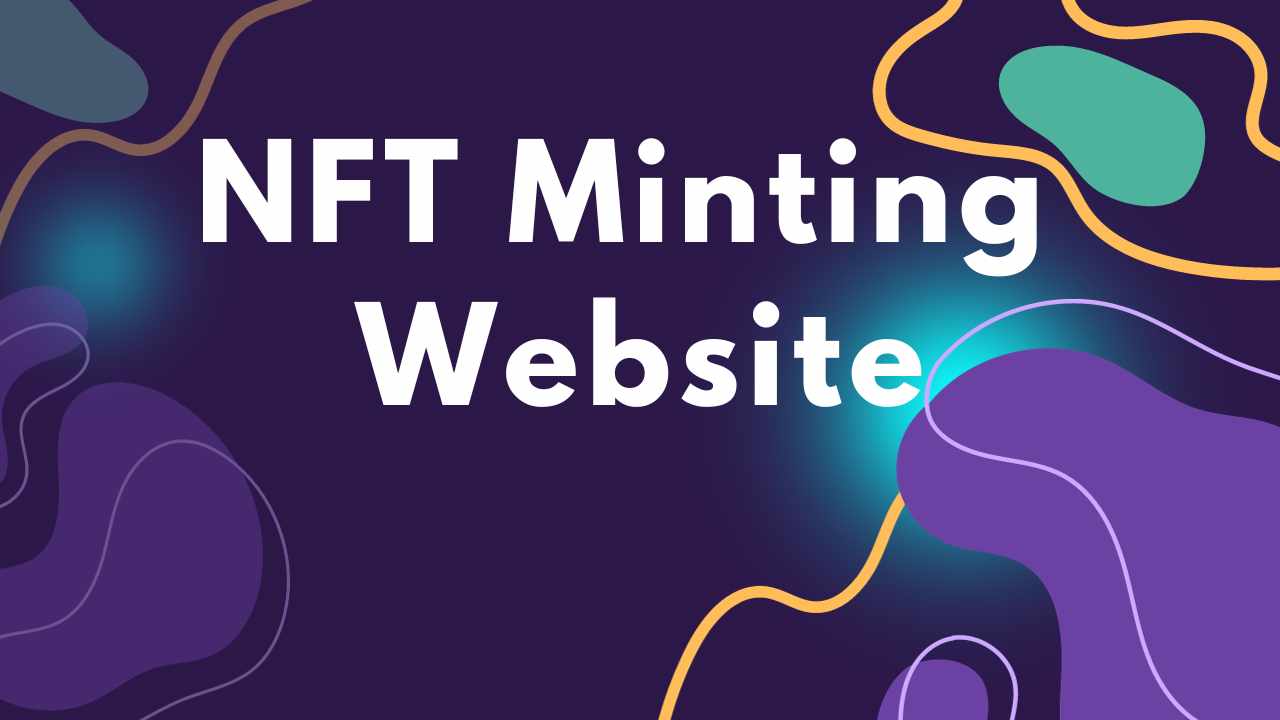In this article, we will try to cover all the NFT-mining factors, and this will guide you in starting your business and how important a website is.
Table of Contents
- Understanding NFT Minting
- Key Components of NFT Minting Websites
- Popular NFT Minting Platforms
- Step-by-Step Guide to NFT Minting
- Challenges and Risks in NFT Minting
- Case Studies
- Frequently Asked Questions (FAQs)
Evolution of NFT Minting Websites
Non-fungible tokens (NFTs) are changing quickly. The rise and development of NFT minting websites have been very important in making it easier for anyone to create and share digital assets.
In the beginning, only people with a deep knowledge of blockchain technology were able to mint NFTs. But as NFTs became more famous, easy-to-use tools sprung up to make the minting process easier for artists and producers.

The first sites were mostly about collecting art and other visual items. For artists who want to tokenize their work on blockchain networks, these sites gave them models and easy-to-follow steps. As the types of NFTs people wanted changed, so did the features of websites that mint them. Tokens could be used for virtual real estate, songs, movies, and even tweets, showing how NFTs are becoming more useful.
As NFT minting websites have grown, they have also added environmentally friendly features. As worries about the environment grew, some platforms switched to blockchain networks that use less energy. This was done to address the complaints about NFTs’ carbon footprint.
Also, social and shared aspects have become important parts of many minting systems. Within the NFT minting environment, artists can now interact with their fans, get comments, and even work together with other artists.
Understanding NFT Minting
What is NFT Minting?
Non-fungible tokens (NFTs) are digital assets that can’t be changed or erased. NFT minting is the process of making NFTs. When coins are traditionally made, the word “minting” comes from that process, which emphasizes making something special and important.
How Does NFT Minting Work?
Adding digital assets to the blockchain through NFT minting is a simple but game-changing process. The first thing you need to do is choose an NFT minting tool. These are usually built on blockchain networks like Ethereum.
The people who make digital material, like art, music, movies, and other media, post it to the site of their choice. The information is then turned into tokens by a smart contract, which is code on the blockchain that runs itself. The smart contract creates a unique set of content that includes information about the author, a description of the work, and how rare the object is. Besides these costs of NFT minting are important.
Smart Contracts

The new idea of smart contracts is a big part of how non-fungible tokens (NFTs) work and what makes them special. Blockchain technology powers smart contracts, which are a key part of making, holding, and moving NFTs.
At its core, a smart contract is a deal that runs itself, with the rules put into code. When it comes to NFTs, these contracts make the minting process easier and more automated. If an author chooses to tokenize their digital product, it could be music, art, or something else. A smart contract is then set up on the blockchain.
Blockchain Integration
Blockchain, the decentralized and open-record system that cryptocurrencies are based on, is also the best way to build NFTs. Tokenization is the first idea that is used in the connection. A digital object is turned into an NFT by tokenizing it. This turns it into a unique cryptographic token on the blockchain.
This combination ensures several significant benefits. Safety is the most important thing. Blockchain is decentralized, which means that once information is recorded, it is almost impossible to change. This makes it a safe place for NFT data. This inability to be changed is very important for proving where digital assets came from and making sure they are real, as well as for preventing theft and fraud.
Key Components of NFT Minting Websites
User Interface and Experience
Non-fungible tokens (NFTs) are not only about digital assets, but also about the user interface (UI) and experience (UX) that help producers, traders, and fans find their way around this new world.
Wallet Integration

The most important part of using Non-Fungible Tokens (NFTs) is the NFT wallet interface, which stores users’ most valuable assets digitally. In two ways, these wallets make sure that NFT funds are safe and make deals within the blockchain environment easier.
Security is very important, and these wallets keep secret keys safely. This protects the ownership and validity of NFTs. Users can buy, sell, and trade digital assets with confidence because they know that strong security measures are keeping their assets safe.
Smart Contract Customization
NFTs work because of smart contracts, which carry out the rules and characteristics of these special coins. Customization gives makers the power to set specific features, functions, and profits in the contract code. With this custom method, NFTs become more unique, letting artists, singers, and content makers add their unique touches to their work.
Smart contract customization gives artists a way to show what they want, from setting selling fees to adding dynamic elements. As the NFT space continues to change, the ability to customize smart contracts will likely be a key factor in determining the future of digital control. This is because it allows for more freedom and creativity than traditional forms of expression.
Popular NFT Minting Platforms
OpenSea: Not only is OpenSea one of the biggest markets for NFTs, but it also has an easy-to-use tool for minting NFTs. Tokenizing digital material is easy for creators, which makes it possible for deals to go smoothly in the OpenSea marketplace.
Rarible: Rarible is unique because it is decentralized, which means that makers can create, buy, and sell NFTs without having to depend on a single authority. Its unique way of running things gives the community power over the platform’s future.
Mintable: Mintable is proud to be a tool that puts users first by letting NFT producers make their smart contracts. It makes the minting process easier to understand so that artists and content makers with different levels of technical know-how can use it.
Other Emerging Platforms
Along with the well-known platforms, more and more new platforms are coming out to make the NFT world more interesting. New ideas and unique features drive these platforms, which give artists new ways to make and show off their digital goods. This adds to the constant change in the environment.
Step-by-Step Guide to NFT Minting
Setting Up Your Wallet: The first thing you need to do to get into the world of digital ownership is to set up your Non-Fungible Token (NFT) bank. Here is a short outline of the steps you need to take:
Choosing a Platform: Pick an NFT wallet that you can trust and that fits your needs. MetaMask, Trust Wallet, and Coinbase Wallet are all popular options. Make sure that the NFTs you want to use are compatible with the system.
Uploading and Customizing Your Artwork: To share your digital art, follow the platform’s instructions. Make sure that the style, size, and quality of your file meet the criteria.
Minting Process: Start the process of minting. The platform will make a one-of-a-kind ticket on the blockchain, which will make your digital work an NFT that can’t be copied.
This easy-to-use process lets artists show off their work, meet with fans, and take part in the always-changing world of NFTs.
Challenges and Risks in NFT Minting
Security Concerns: The Non-Fungible Token (NFT) space is growing quickly and offers a lot of new possibilities. However, some security concerns come with this. To make sure the NFT environment is safe and reliable, creators and users must be alert to possible risks.
Scams and Phishing: There have been a lot more phishing attacks aimed at people who like NFTs. Users should be careful, not to click on links that look sketchy, and make sure that sites and interactions are real.
Smart Contract Vulnerabilities: Because they are so important to NFT deals, smart contracts can be broken. Platforms need to do regular audits, and users should only sign reviewed contracts to lower their risks.
Wallet Safety: It is very important to keep digital wallets safe. Using strong passwords, turning on two-factor authentication, and keeping secret keys away are all important ways to protect NFT assets.
Market Saturation: As the market for Non-Fungible Tokens (NFTs) grows, makers and users are faced with the problem of market saturation more and more. When there are too many NFTs on the market, they can make individual goods less valuable and less noticeable. This is called saturation.
Effects on the Environment: As Non-Fungible Tokens (NFTs) become more common, their effects on the environment are being looked at more closely. NFTs, which are usually created on blockchain networks like Ethereum, have been criticized for using a lot of energy. This is mostly because of the consensus processes that are used to create and verify them.
Case Studies
Success Stories in NFT Minting
As the Non-Fungible Token (NFT) trend continues to sweep the digital world, many success stories in NFT minting show how this new area can change things.
Pioneers of Digital Art: Visionary artists have had unmatched success by issuing their digital works as NFTs. NFT platforms have opened up a new way for everyone to show off and make money from unique works of art, testing the rules of the standard art market.
souvenirs and Games: NFT minting has also changed the souvenirs and games industries. NFTs for rare in-game things and exclusive collectibles have created a new way for gamers to own and trade their virtual assets, which has led to amazing stories of financial gains and unique ownership experiences.
Everyday Creators: Not only well-known artists but also regular people who make things have found new ways to express themselves and make money through NFT minting. The opening up of digital property to more people has led to success stories from all over the creative community, ranging from digital jokes to virtual real estate.
Lessons Learned from Failures: Failures are often the best teachers in life, teaching us important lessons that help us grow as people and in our careers. Every failure, sorrow, or mistake is a chance to get stronger and more successful.
Why Choose Us for Your NFT Minting Needs?
As the Non-Fungible Token (NFT) trend continues to sweep the digital world, many success stories in NFT minting show how this new area can change things.
Pioneers of Digital Art: Visionary artists who have sold their digital works as NFTs have had unmatched success. People can now show off their unique works of art and make money at the same time thanks to NFT platforms. This changes the rules of the normal art market.
User Friendly: Our user-friendly platform is designed to streamline the NFT minting process for creators of all levels.
Toys and Games: The toy and game businesses have also been changed by NFT minting. NFTs for rare in-game items and exclusive souvenirs have given gamers a new way to own and trade their virtual assets. This has led to amazing stories of people making a lot of money and having unique experiences as owners.
Everyday Creators: Not only famous artists but also average people who make things have found new ways to make money and express themselves through NFT minting. More people can now own digital property, which has led to success stories from all over the creative world. These stories include everything from digital jokes to virtual real estate.
Failures Teach Us Important Lessons That Help Us Grow as People and in Our Careers: Failures teach us important lessons that help us grow as people and in our careers. Failure, sadness, or a mistake is a chance to get better and stronger.

